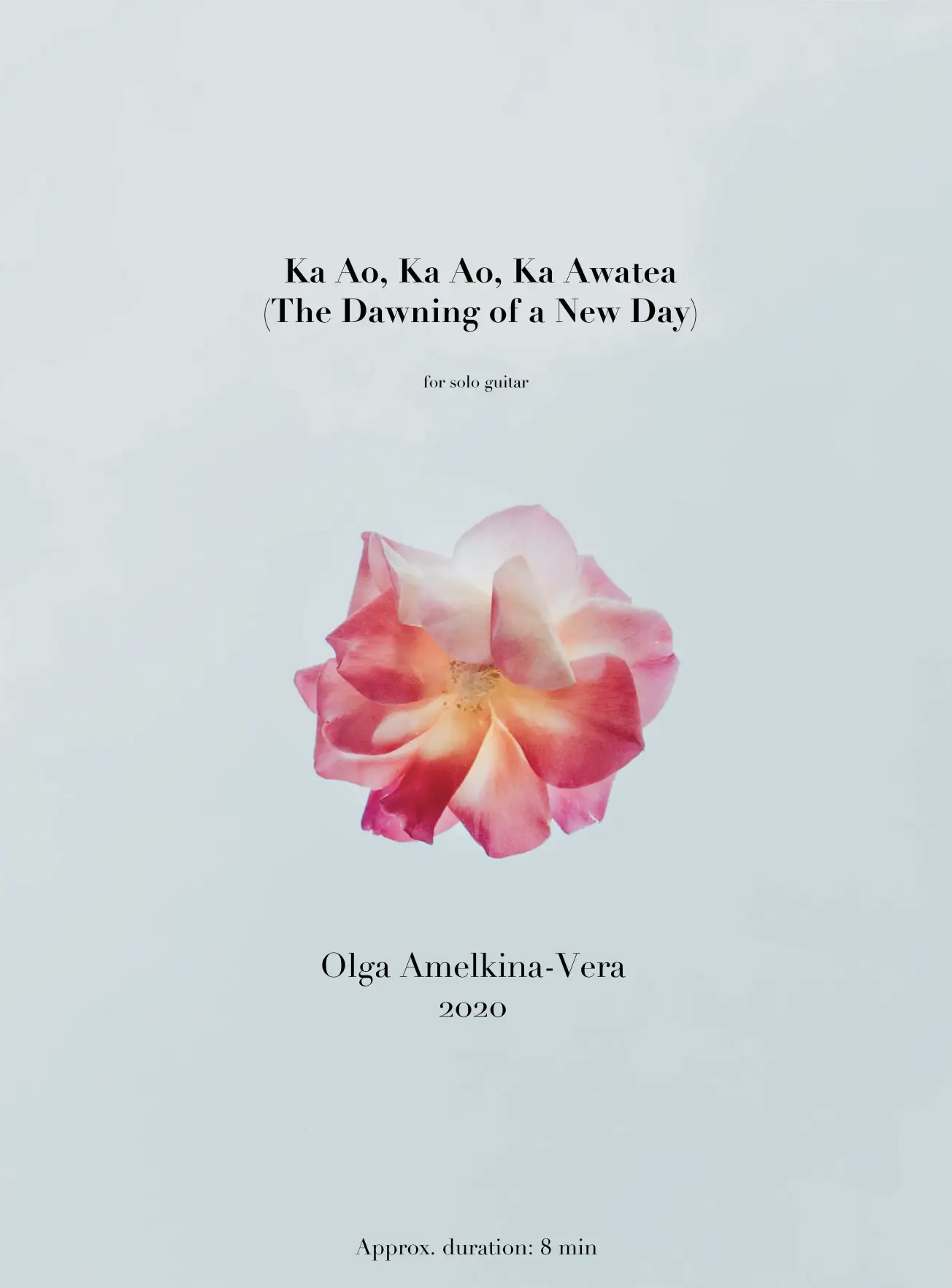The movements’ individual inspirations and meanings are as follows:
I. Karakia: (noun) incantation, ritual chant, chant, intoned incantation, charm, spell – a set form of words to state or make effective a ritual activity. Karakia are recited rapidly using traditional language, symbols and structures. Traditionally correct delivery of the karakia was essential: mispronunciation, hesitation or omissions courted disaster. The two most important symbols referred to in karakia are of sticks and food, while the two key actions are of loosening and binding. Individual karakia tend to follow a pattern: the first section invokes and designates the atua [god, spirit, supernatural being], the second expresses a loosening of a binding, and the final section is the action, the ordering of what is required, or a short statement expressing the completion of the action (Maoridictionary.co.nz). This movement should be played somewhat freely, as an invocation, with plenty of space and atmosphere.
II. Rākaunui means full moon in Maori. In this movement, I envisioned the beauty of the moon in its full glow reflected in the waters around New Zealand’s islands. The performer should let the sonorities linger without rushing.
III. Wiriwiri: Tānerore, son of Tama-nui-te-rā, the sun, and Hine-raumati, the Summer Maiden, is credited with the origin of haka [Maori tradition of posture dancing] and is the trembling of the air as heat haze seen on hot days of summer (Maoridictionary.co.nz). This trembling shimmer of the heat haze is known as wiriwiri and is represented by the quivering of the performer’s hands in traditional Maori art forms of haka (dance) and waiata (song). To me, this shimmer invokes an ever-turning, pulsating energy that ebbs and flows in every living creature. This movement is to be performed very freely, with great variation of tempo.
IV. Haeata: the piece ends with a beginning, which dawn represents.
